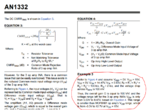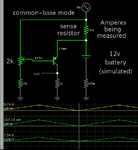Follow along with the video below to see how to install our site as a web app on your home screen.
Note: This feature may not be available in some browsers.
(High-Side Current Sensing)
The TL081 data sheet states the the minimum CM range is ±11V with ±15V supplies.A TL081 is a single, TL082 dual and TL084 quad opamp that have inputs that work at their positive supply voltage.
I think the printed spec's are wrong because the first page of the datasheet describes the feature that the "Common-Mode input voltage range includes VCC+". I guess because the input transistors are P-channel depletion-mode Jfets so they are still conducting when an input is at VCC+.The TL081 data sheet states the the minimum CM range is ±11V with ±15V supplies.
It will work typically to +15V but, as you've often stated, you don't want to use "typical" values for a design.
Interesting.I think the printed spec's are wrong because the first page of the datasheet describes the feature that the "Common-Mode input voltage range includes VCC+". I guess because the input transistors are P-channel depletion-mode Jfets so they are still conducting when an input is at VCC+.
Most likely reason you didn't observe OP common mode range.I simulated "Three Op Amp Instrumentation Amplifier" circuit in multisim and it is not giving varying output with current variation

OR other way to measure shunt current with Transistor array
